Discovering Czechia: Prague to Vienna on two wheels
- Cristina Dwyer

- Nov 14, 2024
- 14 min read
Updated: Dec 5, 2024
In my travels, I always gravitate towards the off-the-beaten-path adventures so that I can experience a new place or culture, meet people, in the most authentic and natural way possible for a tourist.
So, a few years ago, Eddie, an avid cyclist, suggested we explore Spain’s Costa Brava on a self-guided bicycle tour. It was an interesting idea that was taking me out of my comfort zone. See, I’m what you might call a “late-blooming” cyclist, as I didn’t really get into biking until adulthood. On a positive note, while not a pro, I make up for my lack of skill with enthusiasm and …. style. I mean, who doesn’t love an excuse to wear those sleek cycling outfits?
Not only we did it, but it was such a blast that it sparked a new tradition for us. Since then, we’ve made cycling vacations our go-to. We typically book with local companies that handle everything—route planning, bike rentals, accommodations, car transfers, and most importantly, transporting our luggage between overnight stops. With this setup we’ve later biked through France’s Bordeaux region, cruised along the Danube from Passau (Germany) to Vienna(Austria), and explored Ireland’s stunning west coast from Westport to Galway.
This summer, after a four-year break, we planned a similar trip to Czechia. This time though, it felt more than just ticking off a new country. Growing up in Romania, part of the former communist bloc, I was also getting ready for an emotional journey, like seeing a distant relative for the first time.
Our trip kicked off in Prague, where we spent a day getting a jump start on our Czech adventure, before wrapping up in Vienna with a visit to a special spot (more on that later). We cycled for six consecutive days and we wished it could’ve been longer.
Prague
Prague is one of those rare European cities that escaped the widespread destruction of World War II. Ironically, it was Hitler’s personal fascination with its beauty that spared it, and today, it stands as one of Europe’s top tourist destinations.
We stayed near the historic city center, just a short stroll from all the must-see sights. With limited time, I opted for a guided tour—my favourite of getting the most out of a quick visit. Our guide, Misha, had an endless supply of stories, ranging from Czech history to quirky family traditions, all delivered with a dry, self-deprecating humour that still makes me smile. I half-expected everyone in Czechia to be like her, but it turns out she was the most outgoing person we met on the entire trip!
Our tour began in Prague’s Jewish Quarter, Josefov. The grand buildings that line the streets today give little indication of the harsh history of this area, which was once a Jewish ghetto from the 13th century until the Nazi occupation. However, the cobblestone streets seem to remember—small gold plaques, engraved with the names of Jews who never returned, are placed in front of their former homes. There were many, and I found myself carefully avoiding them as we walked.

Just as we were about to leave the Jewish Quarter and head to Old Town Square, our guide paused in front of an unassuming building with an engraving. It turned out to be the birthplace of the writer Franz Kafka, famous and revered mostly by the ones into deep dark and introspective writing (not counting me in that crowd).
As we continued our walk towards the Old Town Square, the transition from the shaded narrow streets to the expansive cobblestone plaza felt like stepping into a new world. My first glimpse of the square was a sudden burst of ornate buildings, each unique in style and colour, yet all harmoniously synchronized. Against the backdrop of a blue sky with a touch of clouds, the morning sun bathed everything, people, statues, and structures, in a warm glow. It was a perfect new day in this timeless city, and I felt an overwhelming sense of gratitude just to be there.
The square was gradually getting filled with locals and tourists, while elegant horse-drawn carriages, reminiscent of the 19th-century Habsburg era, lined up to offer visitors a nostalgic taste of old-world grandeur.
Towering over the square are two architectural marvels: the gothic Church of Our Lady before Týn and the baroque St. Nicholas Church. Equally impressive was the Old Town Hall, home to the famed Prague Orloj—an astronomical clock dating back to the 14th century. Despite our guide’s best efforts to explain how to read the clock’s intricate mechanisms, I quickly decided it was best to simply appreciate its beauty and trust in its reputation as the world’s oldest functioning astronomical clock.
Next, we headed toward the iconic Charles Bridge, winding through a maze of cobblestone streets and tuning into the calm Czech lifestyle. The architecture continued to captivate me; each building seemed like a one-of-a-kind masterpiece.
Interestingly, city planning during the medieval period had a clever solution for the low literacy level of the time: houses were adorned with symbols representing the family living there, such as a horse, fleur-de-lis, lion, bird, or even a musical instrument. As we walked, I found myself searching for these signs, imagining the lives of the people who once called those homes their own.
Today, these historic buildings host restaurants, cafés, and bakeries, tempting ice cream parlors and sweet shops around every corner. The most prevalent was the funnel cake; overloaded with ice cream and whipped cream, it seemed to be an irresistible draw for many. I resisted!
Out of the 18 bridges that span across the Vltava River, it's the Charles (Karlov) Bridge, a pedestrian only bridge, that steals the spotlight. Named after one of the nation’s most influential kings, this 600-year-old masterpiece is a must-see and must-cross. Flanked by two towers and adorned with 30 statues of saints, it also offers some of the best views in Prague. One of the most famous statues is St. John of Nepomuk, known for fulfilling the wish of those who touch the plaque beneath him. (Insider tip from our guide: Make sure you touch the right plaque with your left hand!) I gave it a try—I'll keep you posted if it worked!
After crossing the Charles Bridge, we hopped on the streetcar and made our way up the hill to Prague Castle, the largest ancient castle complex in the world. Dating back to the 9th century, this monumental site has housed Czech kings, emperors, and now presidents for over a thousand years. As we strolled through its grand courtyards, you could feel the rich layers of history seeping from every corner. From the Romanesque Basilica of St. George to the baroque palaces and modern presidential offices, the castle complex is a harmonious blend of different architectural styles.
At the heart of the complex is St. Vitus Cathedral, a Gothic marvel that took nearly 600 years to complete. Its soaring spires dominate Prague's skyline, visible from nearly every part of the city. Founded by Charles IV in 1344, the cathedral serves not just as a place of worship but also as the final resting place for Bohemian kings and saints. Inside, the grandeur continues—vaulted ceilings, intricate stonework, and radiant stained-glass windows that seem to bring the saints and biblical scenes to life in a soft, ethereal light.
We lingered a bit longer in the cathedral’s shadow, taking a stroll through the surrounding gardens, which offered a breathtaking panoramic view of the city below.
As we made our way out of the castle courtyards, we walked through the charming Golden Lane, so-called for the goldsmiths who once lived here. The tiny, colorful houses, now filled with souvenir shops and reenactments of old trades, added a playful, lively contrast to the grandeur of the castle and the imposing presence of the cathedral.
We completed our Prague discovery tour with a self-guided culinary adventure. Our first stop was a riverside terrace, overlooking the Charles bridge, for a refreshing pint of Pilsner Urquell, the most beloved Czech beer.
Fun fact: in the Czech Republic, beer is actually cheaper than water! It’s even rumored that, thanks to its alkaline nature, beer can soothe an upset stomach if sipped slowly throughout the day. Whether that’s true or not, on a hot summer day, a cold beer felt like the perfect and very Czech way to relax.
Later, we stopped for dinner at one of the inviting terraces we’d passed earlier. As earlier in the day we were admiring the pork rotisseries stands firing up in the Old Town Square (and competing with our guide for attention), it was an easy decision for Eddie to go for an epic roast pork knuckle. As for me, I opted for the traditional garlic soup, which was delicious but came with an impressively long-lasting aftertaste, one that followed me for days!
We absolutely loved Prague. The city's heritage buildings are living treasures, seamlessly blending into daily life. Impressive yet not overwhelming, Prague exudes a quiet elegance; more than just the nation’s capital, it carries a regal presence earned through centuries of history.
There’s also a sense of calmness here, a peaceful contentment that lingers in the air. Perhaps it’s the people; though not overly expressive, the Czechs are warm and welcoming. Over the next few days, we would also discover that they have a deep appreciation for nature, just like us.
Cycling from Prague to Vienna
Our cycling tour kicked off in Nymburg, just an hour’s drive from Prague, and wrapped up in Poysdorf near Vienna, a smart move from our tour company meant to avoid the busy traffic around these two big cities.
For six straight days, we pedaled through medieval towns and charming villages, climbed rolling hills, traced riverbanks, crossed vast farmlands, and wound our way through lush vineyards. Our routes varied: dedicated cycling paths, small shared roads, and even rugged trails that put my cycling skills to the test. Along the way, we’d pause to pick roadside apples or admire clusters of perfectly ripe grapes. We sweated a lot; even in late August the summer heat was in full swing, with daytime highs stubbornly hitting the mid-30s Celsius.
Most days, it was just us out there. It is a unique feel, almost meditative, I kind of get into a “zone” where I feel everything flows. While my muscles go through the motion like a clock mechanism, fully focused, my mind drifts, observing without analyzing too much, just absorbing everything around me – smells, colours, sounds. We’re strangers to this land, but I’m not worried about anything, I am just curious. I guess, I feel like a kid again.
At day’s end, we would switch gears into city dwellers and enjoy the town where we would overnight. We would stroll the streets, scouting its architectural and cultural treasures, watching people and taking the chance on a restaurant or vinotheque based purely on instinct.
There’s definitely a routine to this style of vacation, but it’s a routine that brings something new everyday. Looking back, here are a few moments that made memories along the way, narrated day by day (1, 2, 3, 4, 5, 6).
Day 1, Aug 27th – Nymburg (near Prague) to Kutna Hora (42 km)
Starting the ride in Nymburg along the Elbe River felt like getting ready to spread my wings and fly! After two years off the bike, I realized just how much I’d missed it. It didn’t hurt that we had the perfect summer day: sunny, blue skies, and a comfortable warmth in the air.
We stopped for lunch in Kolin, a charming medieval town that welcomed us with its beautifully preserved old square: heritage buildings, cobbled streets, historic statues, and inviting terraces.
Later we swung by the Church of Saint Bartholomew; the gothic style building dating from 13th century, with its sturdy walls and guarding tower, felt both fearless and timeless.
Kutna Hora was the grand finale of our day. The historical town centre, a UNESCO heritage site, is a testimony of the great wealth and economic boom that the town has once enjoyed as the silver capital of Bohemia.
The town seemed quite dormant at first, but as we tried to find our way within the maze of high stone walls, we stumbled upon cozy, tucked-away restaurants, all fully booked, to our surprise. Luckily, we scored one of the last spots on a terrace, dined and refreshed with a … Czech beer.
We wrapped up the day with a stroll on the narrow cobblestone streets that led us to some amazing views of the city, and a visit to the St. Barbara Church and the Central Bohemian Gallery.
Day 2, Aug 28th – Kutna Hora to Pardubice (53 km)
After a hearty breakfast in our palace-like accommodations, we set off from Kutná Hora. Navigating out of town was a bit of a puzzle, even with the GPS and written directions, but thanks to Eddie’s sharp sense of direction (and my exceptional talent for following him), we managed to stay mostly on course.
I should say, not everything goes smoothly on these trips and that’s exactly how I like it. It’s those unexpected twists and small “detours” that make the journey memorable. These little challenges add a dash of adventure, and they’re always the stories I end up smiling about later, no matter how tricky they felt in the moment.
"Enthusiastic" wasn’t exactly my mood as we stepped into the Church of All Saints in Sedlec. This famous Czech site draws crowds for one reason: it’s decorated with the bones of about 40,000 people. Yes, an ossuary, like a grave you walk into, with intricate bone arrangements - chandeliers, altars, even a coat of arms. Emotionally, it was a mixed experience. Part of me was ready to bolt, while another part was captivated by the eerie artistry. The ossuary was born out of necessity, as the plague and Hussite wars brought more victims than the cemetery at Sedlec’s Cistercian monastery could hold. I found it appropriate that photography was forbidden; it felt right to leave this place as a memory.
The rest of the day unfolded like a breath of fresh air, with sunny skies and open landscapes, a sense of pure freedom. We made a quick stop at Chateau Kacina, an impressive early-19th-century estate, admiring its grandeur from the outside.
Not long after, we arrived at the Kladbury horse farm, renowned for its tradition of breeding white stallions for European royalty over the past 400 years. We paused a few times to take in the view, watching the majestic horses roam across wide, open fields. I’ve always loved horses; there’s something timeless about these creatures—they embody elegance, strength, and beauty. Seeing so many of them in one place was special; the scene felt like a page from a fairytale.
Eventually, Eddie managed to pull me out of my daydream, and we continued on to Pardubice, our stop for the night. Compared to Kutná Hora, Pardubice felt much more vibrant; maybe it was the lively Renaissance buildings with vibrant colours and intricate decorations, or perhaps it was the live band warming up for what looked like a regular evening show for restaurant patrons and passersby alike. The streets were lined with cozy terraces where people lingered for drinks and chats, giving this medieval town a surprisingly warm and inviting feel.
After dining at an Irish pub (yes, an Irish pub in Czechia; it came recommended, and it was good), we joined in the relaxed atmosphere of a vinotheque. There, we stumbled upon one of the best white wines I’ve tasted to date - a dry Riesling from Moravia. I’ve tried it a few times afterwards, from different wineries, just to confirm it wasn’t a fluke, and it never disappointed. So, for the wine aficionados out there, don’t skip a chance to try this one if it crosses your path.
Day 3, Aug 29th – Pardubice to Litomysl (61 km)
We left the beautiful Pardubice just before 9 AM, the usual time when we would hit the road. This was a longer day, but the ride was easy and relaxing .
We got to ride on dedicated bike lanes, looking into the distance towards the Kuneticka Hora castle, that seems to be on watch over the region from the top of the mountain where it’s been built.
We stopped for a coffee break and water refill in the town of Dasice.
We passed through the medieval town of Vysoke Myto and its impressive main square.
We arrived in Litomysl with plenty of time and energy to explore on foot the prestigious Bohemian city, another UNESCO world heritage site.
Unlike most medieval towns Litomysl doesn’t have a central square, but instead has a main, wide street where we promenaded at leisure among the heritage buildings, taking a peek at the different shops and restaurants hosted under the side arcades.
We parted from the main street to visit a church and monastery complex of buildings and gardens; located on top of a hill the spacious area offered a splendid panoramic view of the city.
Later we dined on a patio built around trees, the most natural décor one could wish for.
Day 4, Aug 30th – Litomysl to Svitavy (50 km), train ride to Brno
As night fell, we discovered that Litomysl doesn’t really sleep. We went to bed with a lovely view of the old townhall clock tower outside our window, blissfully unaware of its unwavering commitment to mark every single hour. Thanks to our wide-open windows (air conditioning was a luxury we had to do without), I can confirm that its bell tolls loud and clear all night long.
Needles to say we were a bit groggy next day, but after a strong coffee and satisfying breakfast, we made a good recovery and hit the road.
A memorable stop on our route was the town of Svitavy, where we visited the modest monument dedicated to Oskar Schindler, the very man who inspired the iconic Schindler’s List movie. The monument, tucked away among the trees in a quiet park, stands in front of Schindler’s childhood home. It took us a bit of searching to find it; for some reason, I expected something more… monumental, matching the movie's fame. But perhaps its simplicity was fitting; humble, matching Schindler's humanity.
We arrived in Brno late afternoon. As the former capital of Moravia and Czechia’s second-largest city, Brno has a lot to offer: hundreds of historical sites, the country’s second-largest urban preservation area, and a lively yet relaxed vibe, complete with plenty of restaurants and cafes. If you’re planning a visit, I’d highly recommend setting aside a full day as there’s quite a bit to see both in and around the city.
Day 5, Aug 31st – Brno to Mikulov (60km)
Another spectacular cycling day. For part of the day we cruised on and off along the Svratka river, we later crossed the huge Nove Mlyny lake to Dolni Vestonice, our gate into the Moravian vineyards.
Ahhhh, vineyard covered hills - a scenery I cannot get enough of. I am simply fascinated by the sight of the perfectly aligned vineyards, meticulously tended plants, and the grapes peeking out in the sun. The ancient art of wine making never grows old or easy, wine remains one of the most sophisticated drinks, one of the few that brings along the aromas of its origins. Have I mentioned that I do like a good glass of wine?
We spent the evening and night in Mikulov, a charming medieval town with an impressive historical heritage. We took a stroll through the historical centre and visited the magnificent castle which gifted us with a beautiful city view at sunset.
Day 6, Sept 1st – Mikulov to Poysdorf (45km), transfer by car to Vienna
We started the day by saying goodbye to my beloved vineyards.
Later we made a stop to smell a few roses in the beautiful gardens of the former palace of the Lichtenstein family in Lednice, very close to the Austrian border.
Nowadays, one can easily miss noticing the crossing from Czechia into Austria, especially if driving. There are no armed guards, or barb wires or any kind of barrier. There is a small border white stone and two traffic panels with the names of each country. But it wasn’t always like that. There were many Czechs that tried to escape the iron courtain in search for a freer life in Austria. Many didn’t make it. The rusted iron pillars set in memoriam near the border bear the names of some of them. I could relate to this history and it was an emotional encounter.

Poysdorf marked the end of our cycling journey, and I could hardly believe it was our last day on two wheels; I wasn’t ready to let go just yet.
As I wandered around, waiting for our car ride to Vienna, I stumbled upon a local who seemed the perfect listener for my end-of-trip nostalgia.
Vienna
This was our second time in Vienna, and we have been itching to return. For Vienna's rich culture and charming atmosphere, you would think . Sure, that too, but the real reason was having one more chance to taste THE Wiener schnitzel at Figlmüller. In fact, that schnitzel craving is exactly why we chose the Prague-to-Vienna route over Prague-to-Dresden. Makes sense, doesn’t it?
Vienna wasn’t just about schnitzel.
We wandered throughout the city, passing by some of Mozart’s former residences and revisiting the stunning St. Stephen’s Cathedral and its lively plaza.
At the Hofburg Palace, we explored the treasury and the grand library, which brought back memories of Dublin’s Trinity College Library.
To top it all off, we ended the evening with a chamber music concert at St. Peter’s Church (Peterskirche), a magnificent venue for an unforgettable performance.
Soooo …. what do you think, feeling inspired to give it a try? Let me know if you want to find out more.
This is the first cycling trip I've documented and I should have done it sooner! Each journey has been one-of-a-kind, like the countries and cultures they've pedaled us into. And yes, we're already dreaming of the next one. The list? Let's just say ....it's very long.














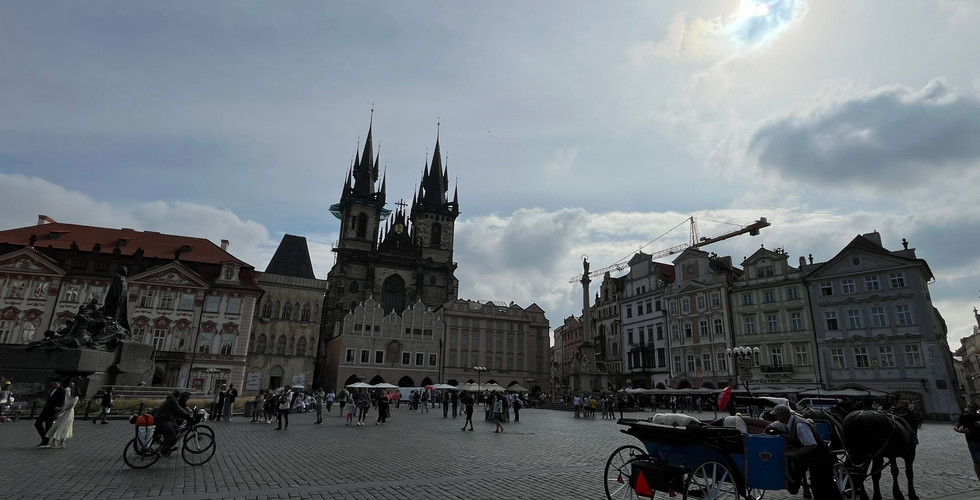

















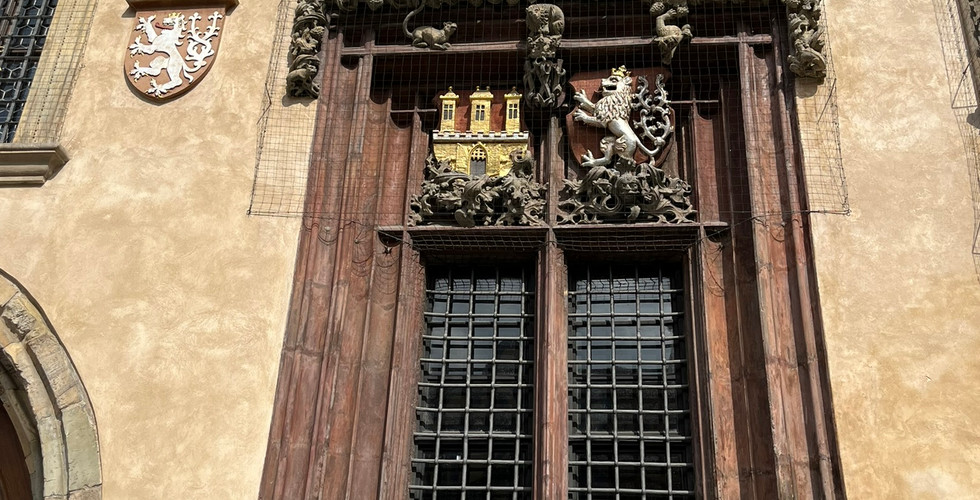



















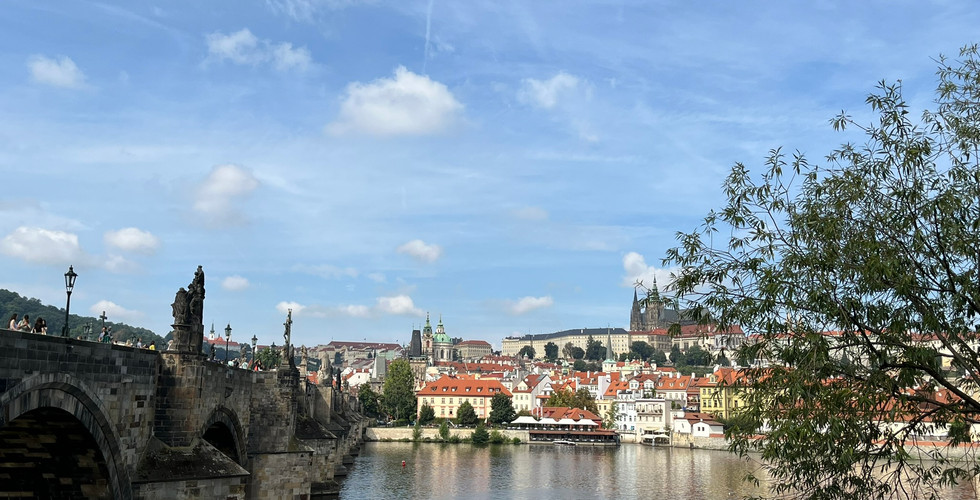







































































































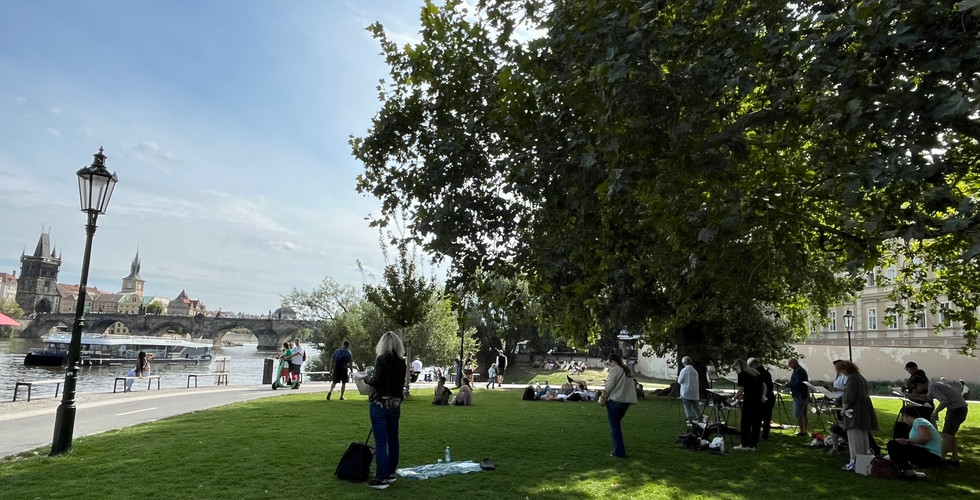













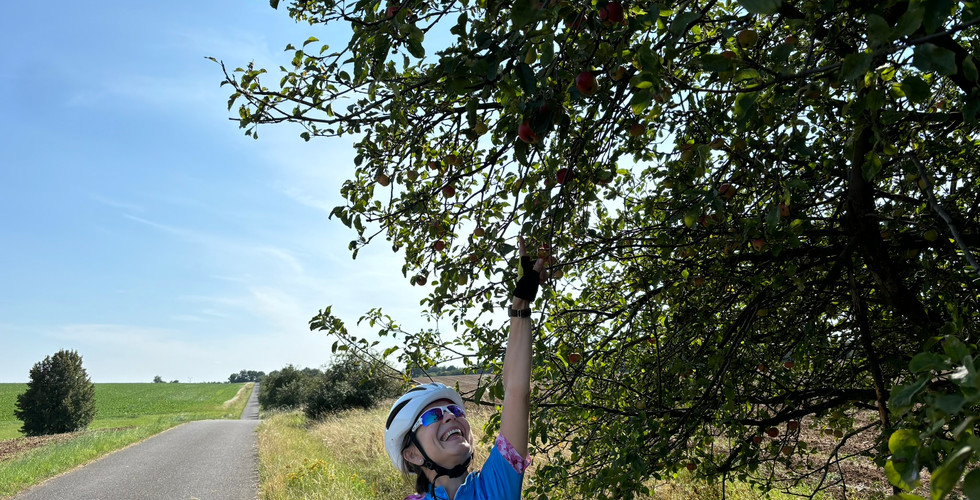





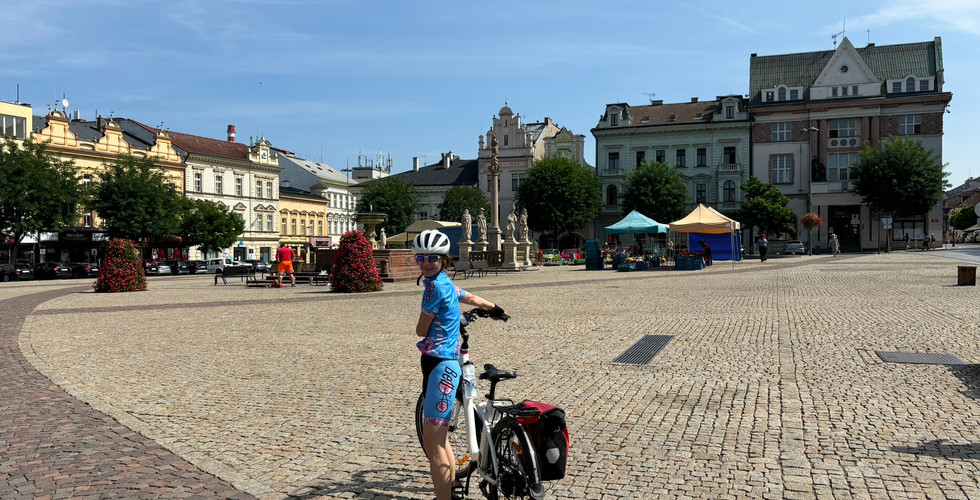















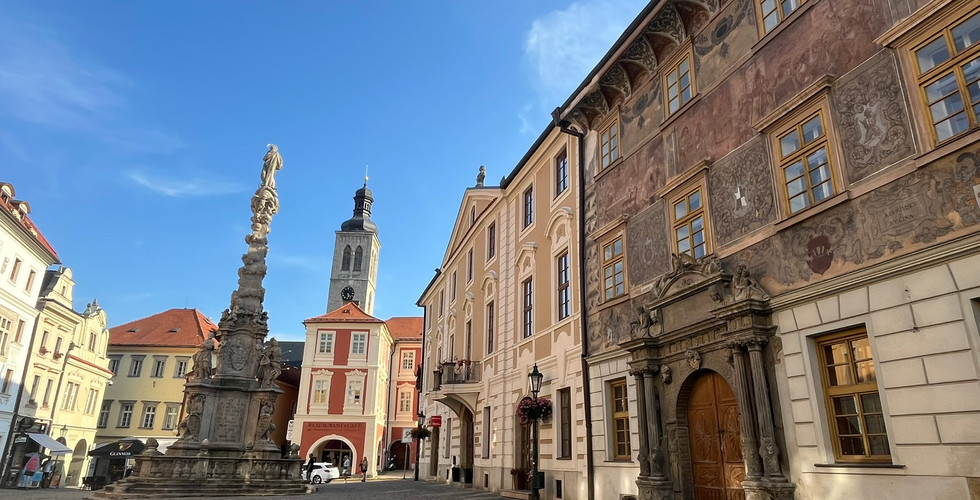

























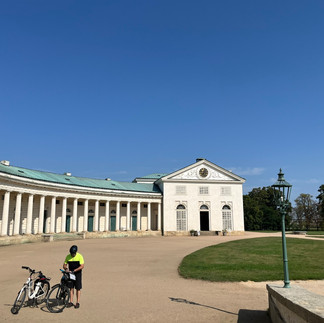
























































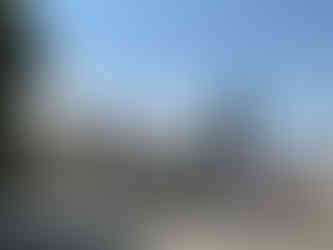

















































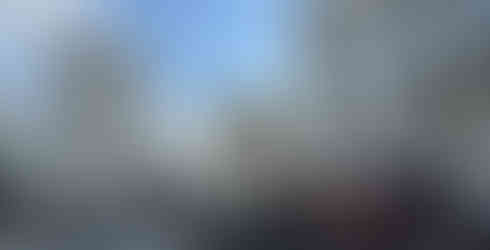















































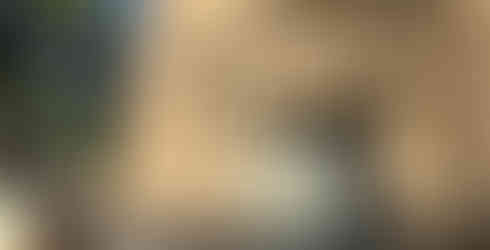


























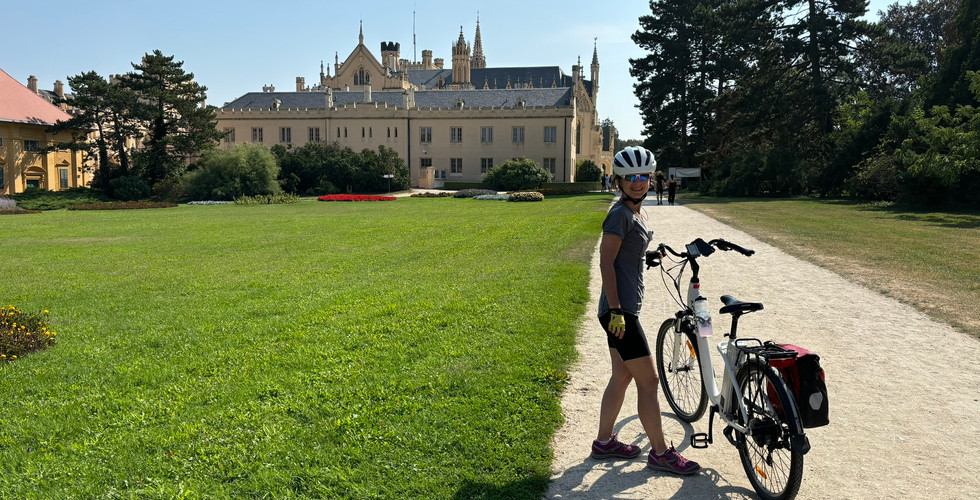








































































It was a great trip. Croatia next?
Chica Cristina! Oh my! This brought back memories of my trips to Prague, Brno and Vienna. This time, I’m inspired to go back on a bike trip! Love your stories (especially the funny moments), photos and videos! They made me daydream about visiting Europe again soon!
Cristina what another wonderful blog. It too makes me want to sign up for an e-bike trip like this (already shared with my wife for the future!). Monrovia wines, huh? Thanks!
And this would NOT be me: "The most prevalent was the funnel cake; overloaded with ice cream and whipped cream, it seemed to be an irresistible draw for many. I resisted! "
But what a great experience and always appreciate you for sharing in such a well-written, visual way!
Now I want to go on a cycling trip across Czech!